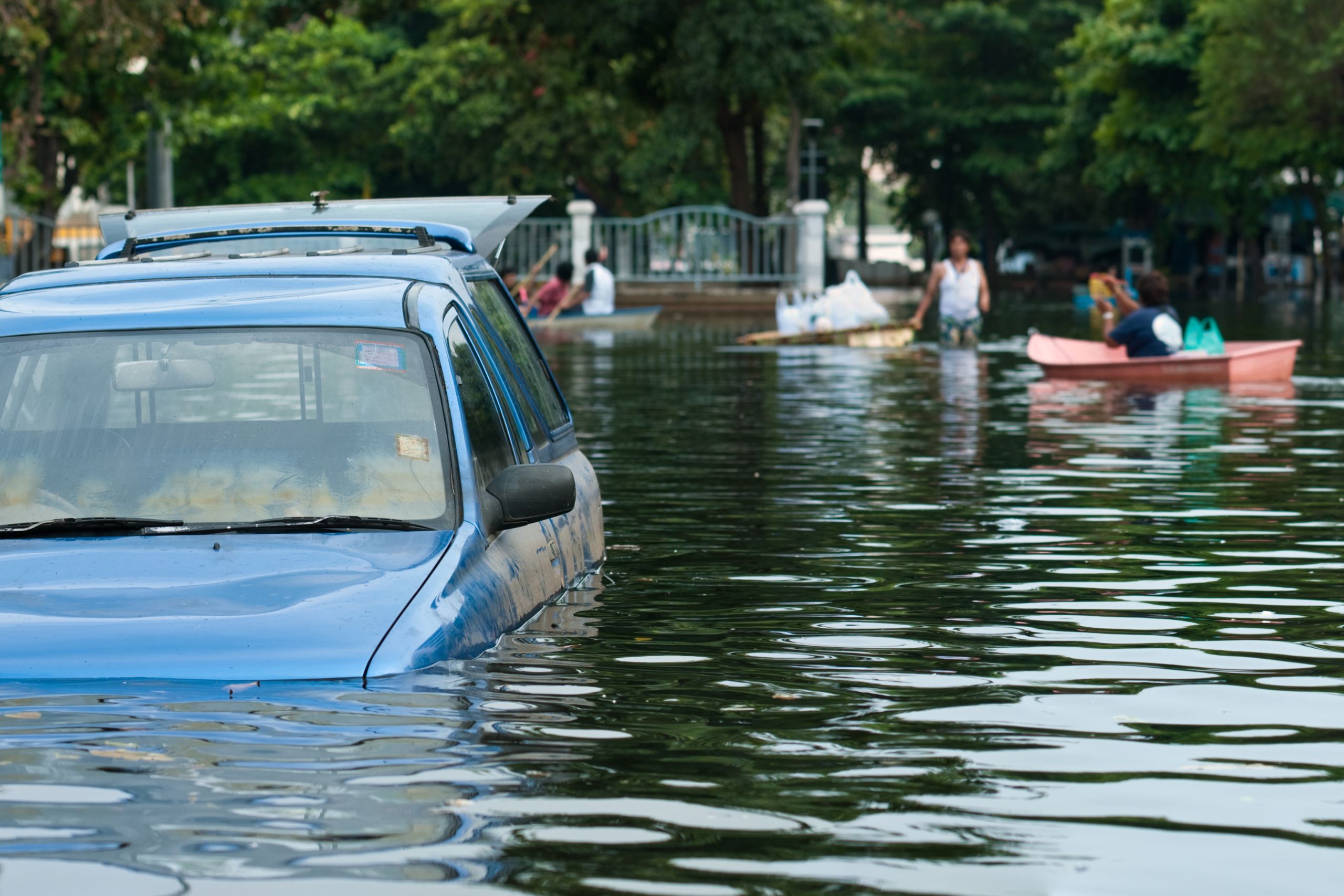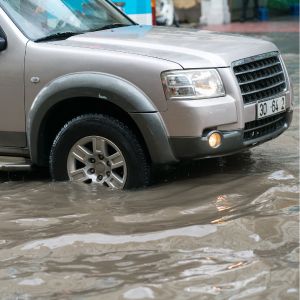Car Rust Prevention and Avoiding Flood Damaged Vehicles

Car Rust Prevention and Avoiding Flood Damaged Vehicles
Inflation may have cooled somewhat after 2021, but high prices continue to squeeze consumers. Cars are one of the most expensive purchases for most people, and for those shopping for a low-priced used car, there are pitfalls to watch out for. Visible rust is one of the worst issues on used cars. As rust experts, we recommend avoiding visibly rusty vehicles and purchasing a pre-purchase inspection to inspect the nooks and crannies of the vehicle. Once rust has taken hold on a vehicle, it can be difficult or impossible to remove entirely! We specialize in rust prevention, not rust removal. Our rust prevention products help prevent rust before it starts. When shopping for a used car, rust is a bad sign, but it’s not the only thing to look out for. Cars involved in accidents, flooding, and more should be avoided as well! These cars are damaged goods, and they will be stuck with a permanently branded title as a result.
What is a Branded Title?
When shopping for used cars, look for “salvage title” or “rebuilt title” somewhere in the car description. These cars have what’s known as a “branded title” which means that an insurance company declared the car as a total loss. There are a few reasons a car might be written off, such as collision damage, theft, and flooding. For flood cars, they are often a total loss due to the extreme damage to the vehicle that is almost impossible to fully repair.
Why Avoid Flood Cars?
Don’t think “buying a flood car” won’t happen to you—according to the Minnesota Attorney General’s Office, 358,000 cars were submerged in floodwater as a result of Hurricane Ian in 2022, and many of these cars will be sent for sale around the country. As we explained in our post, Car Rust Prevention and Avoiding Flood-Rusted Vehicles, flooded cars can have unseen rust and corrosion, and more importantly, can be a safety hazard. Critical components such as computer boards and airbag controllers can be damaged, leading to loss of power during driving, or disabled airbags in an accident. In general, a car that has been flooded is best suited for the junkyard, where it can be parted out, separating the usable parts from the components that should be left behind, such as moldy carpets, corroded wiring harnesses, and damaged electronics. Unfortunately, this is not what always happens to flood cars. Unscrupulous sellers hide the vehicle’s history by title washing, where the vehicle is registered in a different state where the branded title doesn’t carry over, or even physically alter the title to hide the branding. The physical water damage is covered up by cleaning and detailing the vehicle, where it may not be immediately obvious that the vehicle has flood damage.
 A note about safety—Zerust would like to remind you to never attempt to drive through a flooded road. There are several risks to doing so. One is that you cannot easily tell how deep the water is, and rushing waters can cause you to lose steering and control of the vehicle, leading to an accident or even drowning. Secondly, if water gets into the engine through the air intake, hydrolocking can occur, where incompressible water interferes with the engine’s pistons and cause permanent engine damage. Lastly, sensitive wiring and electronics can be damaged if they get flooded, which can be extremely expensive and difficult to fix. It’s best to turn around when encountering flooded road, or else park the car on high ground if possible and wait for the road to be clear.
A note about safety—Zerust would like to remind you to never attempt to drive through a flooded road. There are several risks to doing so. One is that you cannot easily tell how deep the water is, and rushing waters can cause you to lose steering and control of the vehicle, leading to an accident or even drowning. Secondly, if water gets into the engine through the air intake, hydrolocking can occur, where incompressible water interferes with the engine’s pistons and cause permanent engine damage. Lastly, sensitive wiring and electronics can be damaged if they get flooded, which can be extremely expensive and difficult to fix. It’s best to turn around when encountering flooded road, or else park the car on high ground if possible and wait for the road to be clear.
Clues A Vehicle Doesn’t Have A Clean History
A price that is lower than market value is the biggest clue that a vehicle has had issues. Reputable car dealers don’t usually sell vehicles with branded titles. Instead they are auctioned off, ending up at small Buy Here, Pay Here lots that sell clunkers at high interest rates to sub-prime borrowers! Typically you will find these vehicles at the low-price end of the spectrum for any given vehicle. These vehicles may be difficult to fully insure and finance, and lurking mechanical issues can mean headaches for the prospective car buyer. For vehicles that were rebuilt after collision damage, the quality of repairs can vary widely, and it’s the luck of the draw if the repairs were done well. In the right hands of a savvy buyer, these cars can be a good value but for the average car buyer, we recommend passing on these cars.
Check the physical title to see if it’s a clean title. Each state is different so check and see how branded titles are designated for that title. It may say “salvage”, “rebuilt” or “F” for flood damaged status. Multiple owners in a short time, especially in different states is a red flag for flood damage or other issues. VIN numbers should be checked in a vehicle history report using one of the many services available. While there is a fee involved, it’s a small investment in ensuring that there are not serious problems reported with the vehicle. Reputable dealers should provide this free of charge.
Flood damage might be hard to spot depending on the severity of the damage but there are clues to look for. A musty odor should not be present in the vehicle. It’s difficult to dry out a vehicle entirely after flooding, leading to mold and mildew in hard to reach areas of the vehicle. Rust in unusual places such as the seat rails is a red flag, as this area is not prone to much moisture except for occasional snow or rain from boots. A fresh coat of paint covering up rust could indicate water damage, especially with the telltale look of corroded metal underneath the paint. Overspray of paint is common in quick vehicle flips because of the effort involved in removing the interior to repaint correctly. Mud and silt present in the trunk or under the seats is a sign of possible flood damage. One clever tip is to pull out the seat belt all the way, and look for discoloration on the belt as this is impossible to cover up. Mud in the bumper and suspension is difficult to remove entirely, so check to make sure that these areas are free and clear. A line on the motor with discoloration can indicate where the water level reached during a flood event.
Clean Titles Don’t Mean Clean Cars
Even if you’ve confirmed that the vehicle is free from accidents, flood, hail, or fire damage, rust on the undercarriage of the vehicle is the slow, silent killer of vehicles. The progression of rust is dependent on the quality of the steel, paint, undercoatings, and the usage of the vehicle. For the die hard commuter that drives in snow and slush, year after year, road salt simply corrodes the frame, fuel and brake lines, body panels, and other parts of the vehicle. This can be mitigated with frequent underbody washing, but brine mixtures become trapped underneath bumpers and splash guards, making removing the corrosive brine difficult. As always, a good inspection by a trusted mechanic or knowledgable person is imperative in looking for significant vehicle issues before purchase. It bears repeating but rust is easier to prevent then to remove after it’s started.
Tackle Car Rust Prevention Before it Starts
As we’ve said before, rust is like a cancer. What starts small grows and spreads if you don’t take steps to minimize the rust. Cars have some rust protection through paint and coatings on exposed metals in the mechanical systems of the car. Steel parts are often coated to prevent rust, for example, but aluminum components are more resistant to corrosion so they may be left untreated without issues. Unfortunately we don’t make Rust Prevention Vapor Capsules large enough for an entire car, and they are best used for enclosed areas. Instead, we suggest to ensure that car frames, suspensions, and exhaust parts are kept clean and dry, and if exposed to road salt, they should be cleaned to remove residue. Coating with an undercoating spray, such as our Zerust Axxanol™ Spray, or other alternative products can be helpful in sealing out rust-causing oxygen and moisture away from steel and other ferrous metal components. If you need to drive in winter conditions, be sure to take your car to a car wash that can spray underneath the vehicle or use a garden sprinkler underneath to remove road salt if possible. If you have a car in storage that you’d like to protect from rust, our VCI protective car covers protect against rust for up to 5 years. With smart cleaning, storage, and rust proofing strategies, you can extend the life of your vehicle, saving money in the long run by keeping your wheels on the road for longer.
If you have questions about how to protect your vehicle from rust, our rust prevention experts at Zerust can help.
Contact Zerust for information on car rust prevention by emailing us or calling (330) 405-1965.
Additional Resources:
Car Rust Prevention and Avoiding Flood Rusted Vehicles. Zerust Rust Prevention Blog, November 15, 2018
Flooded or Salvaged Used Cars, Minnesota Attorney General’s Office, n.d.
- Categorized: Products, rust inhibitor products, Rust Prevention Tips, Storage
- Tagged: car cover rust prevention, car covers, car rust prevention




